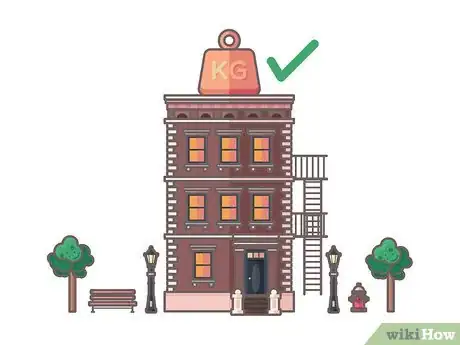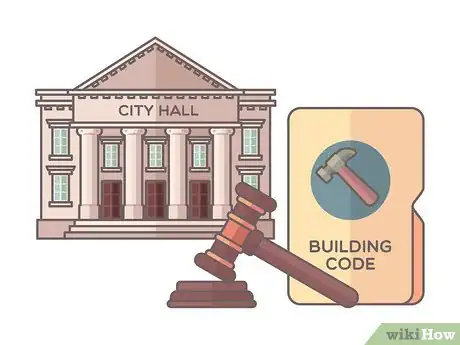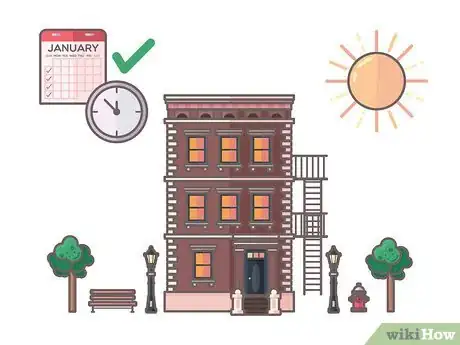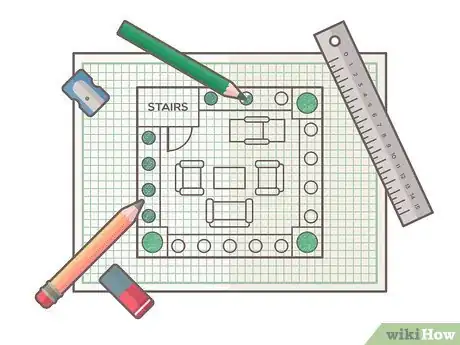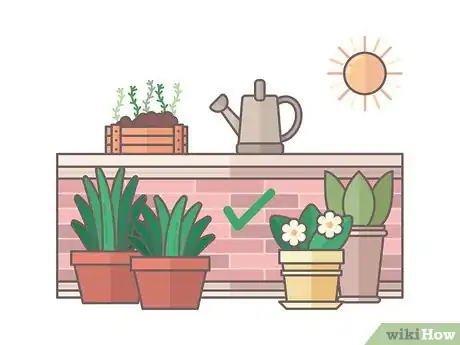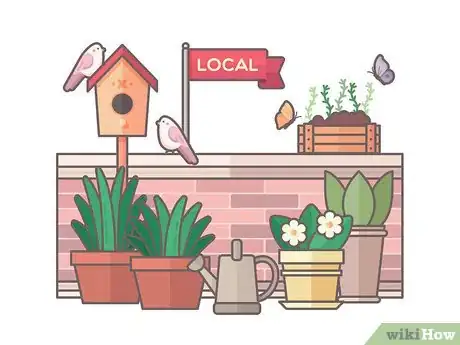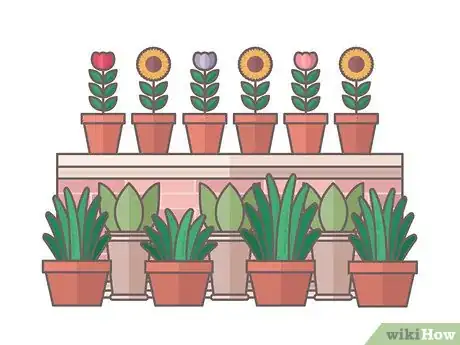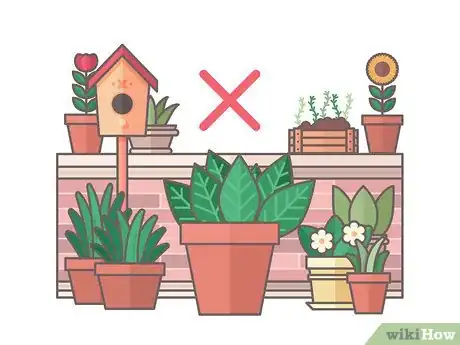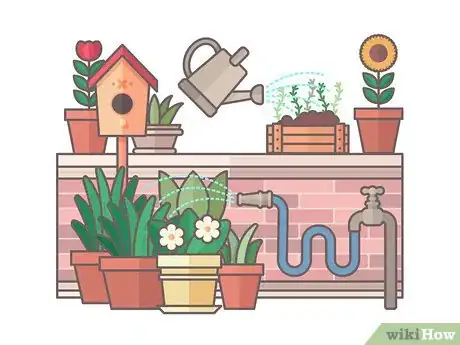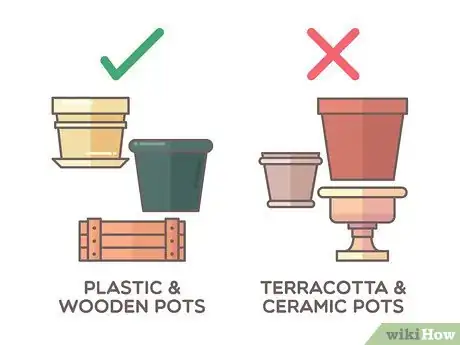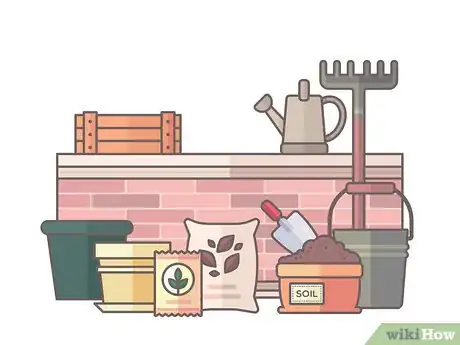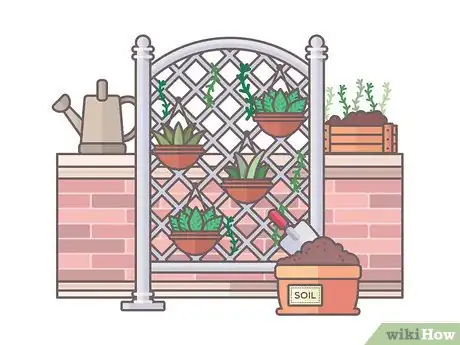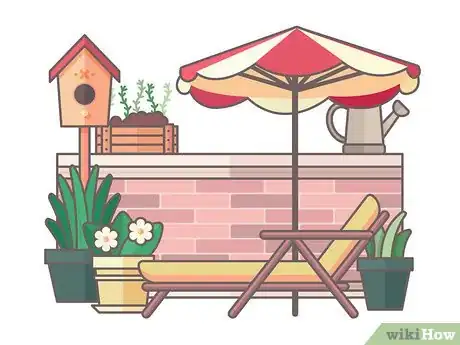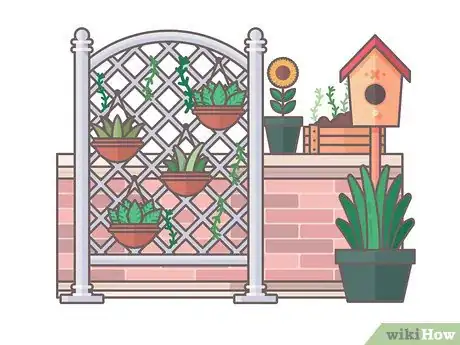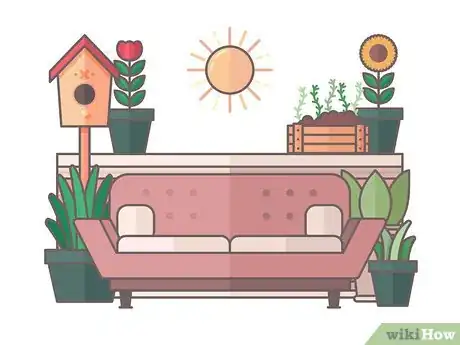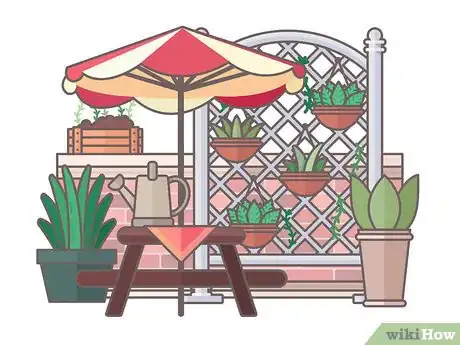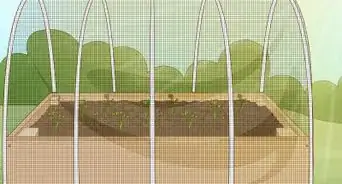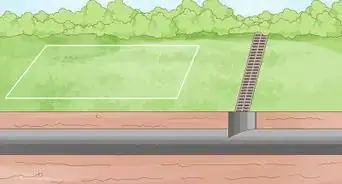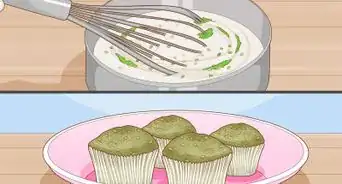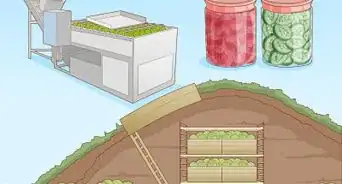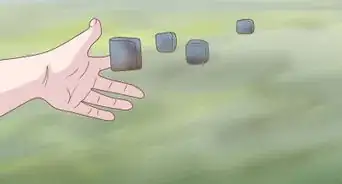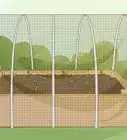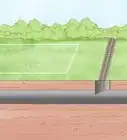This article was co-authored by Lauren Kurtz. Lauren Kurtz is a Naturalist and Horticultural Specialist. Lauren has worked for Aurora, Colorado managing the Water-Wise Garden at Aurora Municipal Center for the Water Conservation Department. She earned a BA in Environmental and Sustainability Studies from Western Michigan University in 2014.
There are 17 references cited in this article, which can be found at the bottom of the page.
wikiHow marks an article as reader-approved once it receives enough positive feedback. In this case, several readers have written to tell us that this article was helpful to them, earning it our reader-approved status.
This article has been viewed 186,987 times.
Rooftop gardens are a beautiful and environmentally-friendly addition to urban homes. If you live in an apartment or a house with no yard, rooftop gardens can let you cultivate ornamental trees and grasses, flowers, and even edible plants. Contact a structural engineer and map out your garden before you begin planting. Choose the right plants and decorations to make the most of what space you have.
Steps
Prepping Your Roof
-
1Evaluate your roof's loading capacity. The loading capacity is how much weight your roof structure can support. This will include your plants, plant containers, furniture, equipment, visitors, and weather loads like snow. Contact a structural engineer to discuss your roof garden and how much your roof can handle.[1]
- A structural engineer can also advise you in preliminary designs for your garden and how to work around possible obstructions (like chimneys). Business search sites like Yelp or Angie's List can help you find a local engineer.[2]
- Make sure the engineer you contact is licensed (a legal requirement in many countries, particularly the United States).[3]
-
2Check with your city's building codes. Review your municipality's building codes before beginning construction to make sure rooftop gardens are allowed in your area. Your area might have restrictions on your garden's height, how you use your roof space, and whether certain decorations are too distracting.
- If you are renting your house, contact your landlord to get permission before constructing your rooftop garden.
- If you live in a building that is part of a historical neighborhood, you will need to contact the district leaders to find out if there are any additional regulations.[4]
Advertisement -
3Monitor your building's sun exposure. Depending on the plant, your garden will need as much as 6 to 8 hours of sunlight a day. Note sunlight patterns over a period of 1 or 2 weeks to make sure your roof's sunlight isn't obscured by other buildings.[5]
- Try monitoring the sun in the morning, midday, and evening so you have an accurate sense of how exposure changed throughout the day.
-
4Plan for wind exposure. Wind is usually stronger on the rooftop than on ground level, especially if your building is several stories high. Too much wind can greatly damage or even kill plants. Structural windbreakers (like trellises) may be necessary if you notice strong winds on your roof.[6]
- You can monitor wind exposure with a weather vane, with a anemometer, or by standing on the roof and experiencing the weather for yourself.
- Because wind can dry out soil, your plants will need frequent watering.[7]
-
5Map out your roof garden's design on graph paper. Using graph or blueprint paper, make a rough sketch of your garden and plot out where you want to put plants and furniture. This will keep your rooftop organized as you begin building your garden. If you change your mind about something, you can always go back and redesign it.[8]
- To keep the sketch to scale, decide beforehand how much space each square on the graphing paper will represent (e.g. 1 foot or meter). Approximate the overall size of your roof or measure it yourself, then base the drawing on your measurement.
Buying Plants
-
1Look for drought and heat-tolerant plants. The potentially intense wind and sunlight will make stronger plants a better candidate for rooftop gardens. Seedlings with these qualities will be more likely to survive the first year. Add shade or windbreakers if you plan to add more fragile plants.[9]
- Ornamental grasses, honeysuckles, and magnolias all do well in hot, sunny weather.
- Make sure you regularly water your plants, even those that are drought-resistant.
-
2Buy plants native to your area. Plants originating from your state or climate will attract native fauna, like birds and butterflies. They will also adapt more easily to your garden than non-native plants. If harsh winds or heat hits, your plants will be much more likely to survive.[10]
- Decorate the garden with bird- or butterfly feeders to attract more animals.
- Ask your local nursery which plants are native to your area for your options.
-
3Choose ornamental trees and shrubs. Large plants will weigh down your roof and leave less room for other decor. Small, ornamental trees and shrubs do well in rooftop gardens when protected with windbreakers and placed in stable containers. Add 2 to 4 trees or shrubs at most to conserve space.[11]
- Trim your trees' roots every few years to keep them at a manageable size.
- Examples of ornamental trees and shrubs include: Dogwood, Japanese Lilac Tree, Crabapple, Star Magnolia, and Jack Dwarf Flowering Pear.[12]
-
4Shy away from large-leaf plants. Plants with large, supple leaves tend to get shredded by the high winds on rooftop gardens. They are also more likely to suffer winter-burn during the colder seasons. Smaller-leaved plants or pines thrive particularly well on rooftops.
Building the Garden
-
1Connect a hose that leads up to your rooftop. Unless you receive enough rainfall for a storage system, using a hose to water your garden will be most space-effective. Check for a faucet or water line on the roof, and attach your hose.
- If you can find neither, use a watering can.
- The most reliable watering method involves setting up an automatic irrigation system.
-
2Add containers for your plants. Refer to your garden map as you decide where to place containers. The ideal pots will be lightweight and deep enough to accommodate your plants' roots. Choose wooden or plastic containers over heavier materials, like terracotta.
-
3Place your seeds or seedlings in the containers. Depending on your preference, you can raise your plants from seeds or transplant young plants from nurseries. Seedlings are usually stronger and pest-resistant, while seeds are much cheaper.[13]
- Seedlings will fare better than seeds in cooler or windier climates.
- If desired, you can also start the seeds inside and transplant them later as seedlings.
-
4Install a trellis. Windbreakers will keep your plants from drying out or getting damaged in harsh weather. Trellises are the most common option for rooftop gardens because they have holes, as solid windbreaks will knock over easily. Build or buy a trellis, and place it where it will block the wind's direction.[14]
- Decorate your trellis with crawling ivy, sweet peas, climbing roses, or morning glory.[15]
Decorating Your Garden
-
1Add lightweight furniture. After you've placed all of your plants, refer to your garden map again as you bring in furniture. Choose lightweight furniture to avoid putting too much pressure on your roof. Foldable furniture, like lounge chairs, are especially lightweight and good for conserving space.
- To prevent the furniture from blowing away in heavy winds, secure it to immovable objects or store it when you’re not using it.
-
2Make use of open spaces. Every inch of space in your rooftop garden needs to have a purpose. Instead of crowding the ground, decorate with height when possible. Utilizing vertical space will make your garden feel roomier, so plant climbing vines or hang flower containers on an adjacent wall if possible.[16]
- Focusing too much on horizontal spaces will make your garden seem cramped.
-
3Pick a focal point. Focal points are centerpieces that tie your garden together. Choosing a centerpiece will make your garden feel balanced and harmonious. A good focal point might be a larger plant (like a tree), an outdoor sofa, or a statue.[17]
- To make your focal point stand out, avoid decorating with more than 1 or 2 larger plants/decorations. Too many focal points will distract from each other and seem overwhelming.
- Pick a trait (like 1 or several colors) to tie the decorations and focal point together so they don't clash.
-
4Choose multi-functional decorations. Because you have a limited amount of space, make sure everything you add can serve many purposes. Look for chairs that can lay out into loveseats or expandable coffee tables. Find benches that can be used as storage for your foldable furniture. If a decoration does not have several purposes, consider whether the space it's taking up is worthwhile.
Community Q&A
-
QuestionCan I use oil tins for vegetables plants?
 Community AnswerYes, but wash them properly before you use them.
Community AnswerYes, but wash them properly before you use them. -
QuestionWhere can I get seeds in my area?
 DonaganTop AnswererAny garden-supply store can help you. Also, there are several mail-order seed companies you can access online or by printed catalog.
DonaganTop AnswererAny garden-supply store can help you. Also, there are several mail-order seed companies you can access online or by printed catalog. -
QuestionWhich seeds are best for planting?
 Community AnswerAll seasonal flowers, almost all perennial flowers, almost all vegetables and fruits and all succulents can be grown nowadays on rooftop gardens, provided adequate support and weight bearing capacity is in place. Apart from some very big trees which attain great heights, everything can be tried. Do bear in the mind the weight of the soil required.
Community AnswerAll seasonal flowers, almost all perennial flowers, almost all vegetables and fruits and all succulents can be grown nowadays on rooftop gardens, provided adequate support and weight bearing capacity is in place. Apart from some very big trees which attain great heights, everything can be tried. Do bear in the mind the weight of the soil required.
Warnings
- Avoid high-maintenance or delicate plants if your roof is especially windy.⧼thumbs_response⧽
- Don't overstock your roof with more than it can carry.⧼thumbs_response⧽
References
- ↑ http://www.cityfarmer.org/rooftop59.html
- ↑ http://www.businessnewsdaily.com/7937-business-review-websites.html
- ↑ https://www.nspe.org/resources/licensure/what-pe
- ↑ http://www.bankrate.com/finance/real-estate/know-rules-when-buying-historic-home-1.aspx
- ↑ https://gardentherapy.ca/edible-rooftop-garden/
- ↑ https://gardentherapy.ca/edible-rooftop-garden/
- ↑ https://www.houselogic.com/by-room/yard-patio/how-to-build-a-rooftop-community-garden/
- ↑ https://gardentherapy.ca/garden-map/
- ↑ http://www.sunset.com/garden/flowers-plants/low-water-plants#lewisia-cotyledon
- ↑ https://realestate.boston.com/luxury/2017/02/14/tips-creating-great-rooftop-garden/
- ↑ https://www.bbg.org/gardening/article/start_a_rooftop_container_garden
- ↑ http://www.homeadvisorhomesource.com/the-10-most-beautiful-ornamental-trees-for-your-yard/
- ↑ http://www.hortidaily.com/article/32426/Seeds-vs.-seedlings--what-is-better
- ↑ https://www.simple.com/blog/budget-to-build-and-maintain-an-urban-rooftop-garden
- ↑ http://theselfsufficientliving.com/10-flowering-vines-plants-climbers-arches-pergola-arbor-trellis/
- ↑ http://www.architectureartdesigns.com/rooftop-garden-make-small-space-look-bigger/
- ↑ http://balconygardenweb.com/rooftop-garden-design-ideas-and-tips-terrace-garden-design/
- ↑ http://openforbusiness.opentable.com/tips/9-tips-for-making-a-restaurant-rooftop-garden-thrive/
About This Article
If you want to create a rooftop garden, start by checking out your roof to see how sunny and windy it is, so you’ll know what plants will thrive and whether you’ll need to have a wind-break. Then use graph paper and map out your design, deciding where to put plants and any furniture. With your sketch in hand, go buy your plants! Choose drought- and heat-tolerant plants, which do well on rooftops. When you’re ready to build your garden, place containers on the rooftop according to plan and get planting. To learn more from our Horticulturist co-author, like how to decorate your rooftop garden, keep reading the article!
